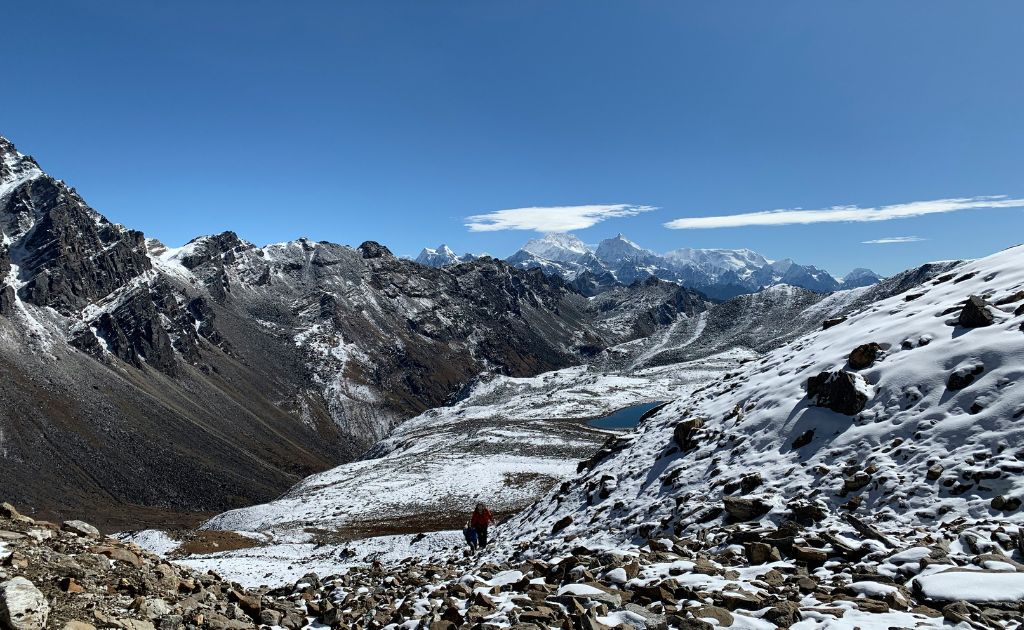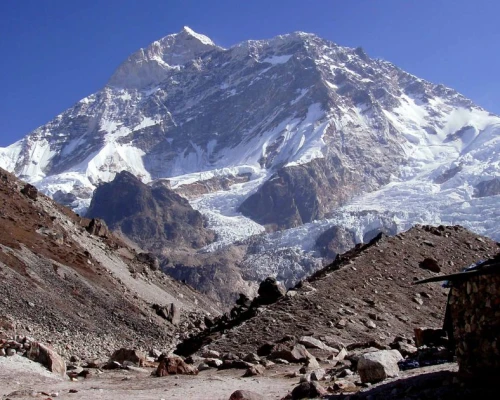Mount Makalu Expedition 8485m
Makalu (8485m) is a good fourth among the 8000m peaks in Nepal. It is also the fifth-highest peak in the world. Mount Makalu rises in the heart of the Eastern Himalayan range, about ten kilometers east of Everest, in the middle of the deep Arun Valley and the Barun Valley National Park. These two valleys are home to primary forests, high-altitude pastures, stunning waterfalls pouring into deep gorges, and an innumerable variety of flora and fauna, not to mention the eminent cultures of the peoples who inhabit the lower areas: Sherpa, Rai, Gurung, and Shingsawa (Bhotia).
Climbing Makalu is no walk in the park. The challenge is impressive and requires great technical skills, essential for climbing a peak over 8,000m. You have to climb very steep slopes, cross very sharp ridges, and encounter extreme weather conditions, inseparable from high-altitude expeditions. The last few meters of the climb require a high level of fitness to move on icy walls and cross very steep passages, everything contributes to making the performance the most adventurous, you have to love adrenaline rushes! From the outset, you must know how to progress with crampons, ice axes, harnesses, and rappelling ropes; in short, master all the major mountaineering techniques. Makalu adopts a pyramid shape, in this configuration, the Southeast and Northwest faces represent the main access routes. The vast majority of mountaineers choose the Northwest route to reach the summit.
Approach
The expedition begins at an altitude of 920m in Tumlingtar – where you arrive after a 30-minute flight – and gradually climbs over a 10-day trek. This is the best way to acclimatize to the altitude before reaching base camp and, on the other hand, allows you to practice climbing relatively quickly. From the low-lying village of Tumlingtar, the trek takes you to the narrow gorges of the Arun Valley. You will cross rhododendron forests and transhumance pastures before reaching a very high altitude. You will move from a subtropical climate to a high altitude, accessing pristine vegetation, and a wide variety of flora and wildlife, not to mention the ancestral cultures and customs of the inhabitants of the different ethnic groups who populate the villages.
The 1st Base Camp is located at around 5600m, with another camp at 6100m, Camp 2 at 6600m, Camp 3 at 7200m, and the last camp at 7600m.
The summit of Makalu was first conquered by a French team in 1955. Since this first ascent to the summit, other attempts have been equally successful.
For more information and detailed itineraries, please request by email or WhatsApp +977 98510 87 925 (Iman, agency manager)

Cultural experiences on the trail
Trekking in the Makalu region offers a unique opportunity to experience vibrant cultural life. The trail is dominated by village communities belonging to the Sherpa, Rai, Limbu, and Tamang ethnic groups. Walking slowly, one can witness traditional lifestyles and visit some of these ancient monasteries. Furthermore, trekking during festivals allows the trekker to participate in and observe local dances, giving them a deeper understanding of Nepal's cultural mosaic.

Difficulty level of the Makalu expedition
The trek is rated "difficult" and is only recommended for experienced trekkers. The route involves steep ascents and descents, high-altitude passes, and isolated terrain. Long days of walking in all weathers are to be expected. Proper preparation and excellent personal fitness are of the utmost importance when undertaking such a demanding trek.
The best time to trek in Makalu
For most people, the ideal time for trekking is from pre-monsoon (spring) to post-monsoon (autumn).
- Spring (March to May): Rhododendrons are in full bloom and temperatures are moderate.
- Autumn (September to November): With clear skies and perfect weather, the mountain views are exceptional.
These seasons offer differences and favorable conditions for hiking.

The following permits are required:
The Makalu trek requires four permits. These are:
- Makalu Barun National Park Entry Permit: This permit is essential to enter the park.
- TIMS Card: This is a necessary card for trekking in Nepal.
All these permits are issued by registered trekking agencies like Yatri Trekking.






